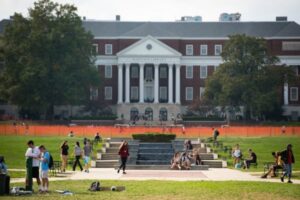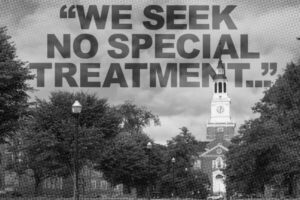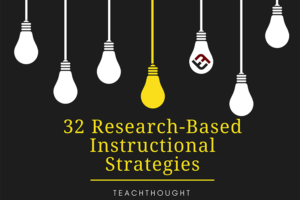
A Great Divergence Across States on Autonomy (opinion)
The ongoing efforts by some states to impose greater control over their public colleges and universities may result in lasting changes to the U.S. higher education landscape
In conservative states, a spate of recent laws gives legislators and governors more control over public higher education curriculum, take authority from faculty over educational policy decisions, and require the policing of faculty and programs for left-leaning bias.
States exercising increasing levels of control over public colleges and universities are moving toward a regulatory environment for higher education more like that for public elementary and secondary schools. The result could be public colleges and universities in these states that start to look much different than their public counterparts in states with greater autonomy for governing boards and faculty.
Debates about oversight and accountability for public higher education have occurred in both liberal and conservative states for decades. What is different about recent initiatives compared to previous accountability efforts across the political spectrum is that they inject more state control over curricular and personnel decisions, take authority away from governing boards, and slash the faculty’s role in shared governance.
States Curtailing Institutional and Faculty Autonomy
Texas has been a leading example of a state ramping up the Legislature’s oversight role over public higher education while also diminishing the faculty’s place in shared governance, including oversight of curricular matters. Under a law enacted in June of this year, faculty councils or senates, if allowed to exist at all, will only be advisory in nature. In addition to setting specific standards for faculty senate membership and terms, the law mandates that institutional presidents will select the leaders for any advisory faculty body and gives presidents broad discretion to remove members.
The Texas law also specifies the duties of institutional leaders and boards in reviewing curricula and hiring matters. For instance, under the law boards must regularly review general education requirements.
The legislation establishes an ombud, appointed by the governor, with authority to investigate complaints that an institution has failed to comply with state directives. If the ombud concludes a public college or university is not adhering to a requirement covered in the law, the official can recommend that the Legislature withhold funding from the institution until compliance is certified.
Lawmakers in other states have sought to place their stamp on general education requirements. In Utah, legislators this past legislative session created a Center for Civic Excellence at Utah State University, described as a pilot program, to oversee general education courses at the university. Before a faculty member can teach a general education course at Utah State, they must have an appointment in the new center. The legislation creates requirements for general education courses at the university, including three humanities courses that emphasize “texts predominantly from ‘Western civilization.’”
Public higher education institutions in Florida significantly reduced general education courses this past year in response to a state law that, among its provisions, imposed new rules on what courses can count as fulfilling general education requirements. Along with excluding courses based on content focused on “systemic racism, sexism, oppression, and privilege,” the law stipulates topics and learning aims, such as a requirement that humanities courses “must include selections from the Western canon.”
In Ohio, a newly enacted law requires public colleges and universities to develop a plan to offer a course dealing with American civic literacy. Like efforts in other states to rein in faculty autonomy, the legislation also prohibits strikes by full-time public university faculty members and requires institutions to adopt post-tenure review systems. Other provisions prohibit DEI training, require student evaluations to include questions about faculty bias and require the elimination of low-enrolled degrees. The law’s supporters have stated that these measures are to combat left-leaning tendencies in Ohio’s public colleges and universities.
In Indiana, legislation passed this year removed three alumni-elected seats from Indiana University’s governing board, giving the governor authority to name all nine members to the IU board. And a 2024 law passed in Indiana established a requirement that faculty must show respect for “intellectual diversity” in teaching, resulting in multiple state institutions adopting systems to let students and other individuals make anonymous complaints against professors for alleged intellectual bias.
Competing Visions of Public Higher Education
The issue of balancing autonomy and accountability in public higher education is not new. States have long wrestled with how much oversight to impose on public colleges and universities. These are, after all, public institutions, and they should be accountable to the public. However, these recent state laws are novel in their prescriptive nature, involving precise directives to governing boards and stripping faculty of authority over educational policy matters. The laws indicate an increasing willingness, at least in some states, for lawmakers to become more hands-on in how public colleges and universities are run. Some public universities, perhaps seeking to head off state action, have also initiated governance reforms that relegate faculty to advisory roles in institutional decisions.
Now, a growing divide exists between states that are becoming more heavy-handed with higher education accountability compared to states that continue to show more deference to governing boards and to faculty authority. A naturalistic experiment is emerging between these competing state approaches to balancing autonomy and oversight for public colleges and universities. At issue is whether a more or less intrusive approach by state lawmakers to public higher education better serves states, students and citizens.
The stakes are high in terms of how these contrasting approaches to public higher education autonomy and accountability play out. What does it mean when a state decides to view its public colleges and universities as subject to the same level of control more typically associated with oversight of elementary and secondary education? Will these states and their institutions reap the rewards of more job-ready graduates? Will public colleges and universities in these states come more to resemble elementary and secondary schools in a functional sense, with presidents more like superintendents and deans more like principals? Will universities in these states that strive to produce cutting-edge research find it more challenging to attract leading researchers or scholars (or not)? Will other states, including more liberal ones, eventually follow the lead of conservative states in imposing more control over their public colleges and universities?
For decades, public colleges and universities were on a trajectory that generally had them becoming more similar across states. Now, the path of public colleges and universities is at a potential governance crossroads. States have spent years and millions of dollars building up their public higher education systems. We are potentially witnessing an epic experiment about what happens when a set of states decides to sharply diminish institutional and faculty autonomy.
Source link



